The right tool can make all the difference in proper screening for delirium.
Takeaways:
- The Nursing Delirium Screen Scale (NuDESC) is a nurse-driven tool for delirium validated in a hospital setting.
- Using the NuDESC delirium screening tool increased accuracy in identifying delirium in an acute inpatient environment.
By Amy Heidenreich, MSN, RN, AGCNS-BC, APNP, and Stephanie Gresbach, BSN, RN, CMSRN
Delores Lewis, who is 85 years old and has a urinary tract infection, was admitted to the internal medicine unit. She lives independently at home, and her daughter checks on her frequently. Jamie, who’s been a nurse on the internal medicine unit for 5 years, arrives for the night shift and receives report from Sue, who tells her, “Ms. Lewis has been here for a few days now. She’s usually oriented, but she was up all night asking about her dog. She doesn’t have a dog. They had a sitter for her last night because she was getting out of bed so frequently. Also, the patient in room 5 is in alcohol withdrawal. She thinks she’s at the grocery store.” Jamie thinks to herself, “I don’t know how I’m going to handle this. I wish we could reduce the number of unpredictable patients. How am I going to keep them all safe?”
If you’re a nurse on an inpatient unit, you understand Jamie’s feelings. Caring for patients with delirium is a challenge; their unpredictable behavior and high acuity can lead to staff burnout. One key to addressing this issue is accurate screening and assessment so that the cause of the delirium (urinary tract infection, alcohol withdrawal, sepsis) can be treated. (See Delirium defined.)
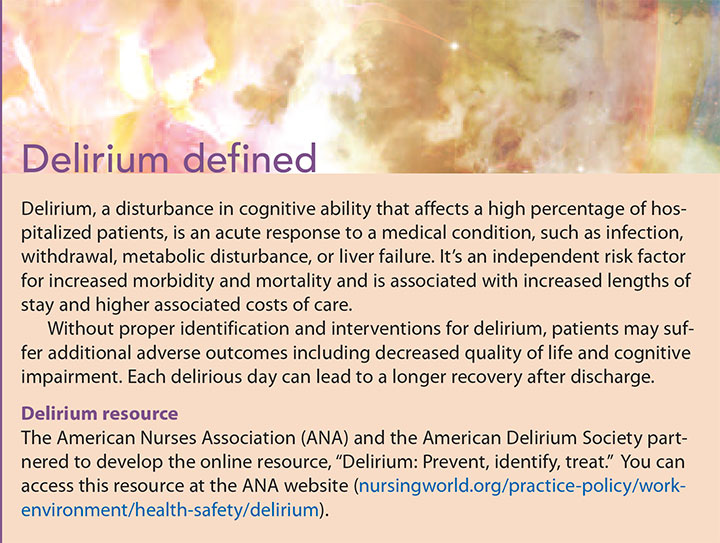

At Froedtert & the Medical College of Wisconsin Froedtert Hospital, a delirium steering committee examined our long-standing processes and investigated how we could make improvements to ensure accurate screening and better patient outcomes.
The challenge
Our facility was using the Confusion Assessment Method (CAM) as a delirium screening tool; however, it wasn’t capturing everything we were seeing in patients. For example, we were missing hyperactive (restless, combative) and hypoactive (sleeping all day, falling asleep while talking) patients. Although we were documenting characteristics of delirium in our notes and physical assessments, we weren’t documenting them correctly in the screening tool, which resulted in a 1.6% delirium identification rate, which we knew was higher.
The CAM tool had many challenges that led to incorrect documentation. Nurses’ notes and assessments would describe a delirious patient, but the screening score didn’t correlate. We found four main problems: establishing the patient’s baseline, identifying mental status fluctuation, using the question setup in the tool, and understanding unfamiliar assessment language.
We struggled to determine a patient’s baseline and whether he or she had an acute change in mental status from it. This was especially challenging if the patient suffered from dementia. We were reluctant to make an inaccurate assessment, so we erred on the side of caution and would answer “no” to the question, “Is this an acute change from baseline,” if we weren’t sure of the patient’s baseline status. We also were unsure about what constituted a “fluctuating course” in a patient’s mental status and had difficulty understanding the tool’s nomenclature. Many times, we knew patients were exhibiting signs of delirium even though we didn’t know their mental status baseline. If we knew the patient’s baseline and that it was fluctuating, we then needed to answer other questions (about inattention and disorganized thinking) that we weren’t confident assessing for.
Despite education and extra monitoring (chart reviews and nurse interviews), we determined CAM was inadequate. We needed an intuitive, easy-to-use, comprehensive tool to more fully identify delirium rates that were consistent with the patient population and our facility’s size.
A better tool?
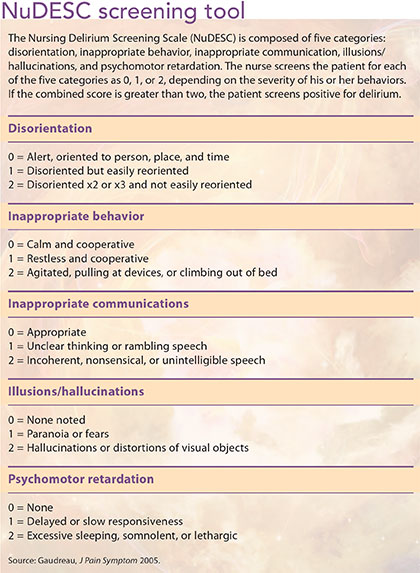

The tool allows nurses to easily assess patients in the moment rather than needing to determine if an acute change from baseline has occurred. Previously, we spent too much time trying to determine if the patient was always confused or if we were witnessing a new finding. With NuDESC, we don’t rely on prior knowledge of the patient’s behaviors or mental status to complete the assessment.
The tool mirrors exactly what nurses already document in their notes and assessments. Each category uses familiar nursing assessment terminology from our cognitive and neurologic assessments (oriented, lethargic, hallucinating); nurses don’t need to learn additional assessment terms.
In addition, the tool is forgiving. Because delirium is determined by answering questions in all five categories, if you underscore a patient with delirium in one category, he or she will likely receive an additional number in another category. This gives you confidence that the patient won’t be missed because of underscoring.
Some characteristics of dementia are similar to delirium, and the NuDESC tool may score positive for a patient who has dementia. However, patients with dementia are at higher risk for developing delirium, so the NuDESC score gets the patient on nurses’ radar so he or she can be watched more closely; with the previous tool, we would have missed this patient altogether.
Based on the advantages of the NuDESC tool, we decided to pilot it using a stepped approach. Little education was needed; we explained the five categories, that each question must be answered, and that if the total score was greater than two, the patient was positive for delirium.
The nurses used the screening tool in conjunction with their current documentation and workflow. Patient chart reviews were completed by multiple nurses who weren’t currently caring for those patients. In addition, two providers performed face-to-face interviews with each patient to act as our standard of diagnosis. The nurses were capturing a significant number of the same patients with delirium as the providers had. Previously, we missed hypoactive patients, but now we were identifying them. We also were able to identify those same patients through the chart audits. Over the course of 3 to 4 months, we gathered enough data that showed that the NuDESC tool was capturing more patients with delirium than CAM. In addition, nurses told us that they found the tool easy to use.
Successful transition
Our transition to the NuDESC tool was seamless. The timeline to implement the change and monitor compliance and effectiveness was fewer than 6 months. We created an online learning module for all nurses and exchanged the CAM and NuDESC tools in our electronic health record. We continued to screen our patients on admission and at every shift, keeping the process the same as before. We also kept our best practice alert active; when a patient screens positive for delirium, the nurse is prompted to add the appropriate care plan. Our screening compliance stayed consistent in the transition and our accuracy dramatically increased.
With the NuDESC tool, we identify a greater number of patients with delirium, and we demonstrate sensitivity and specificity rates similar to those we found in the literature, demonstrating that the tool is easier to use and more accurate than CAM.
Accurate screening, appropriate treatment
Our healthcare system needed a delirium screening tool we could use across all patient care settings. The NuDESC, which requires minimal time and resources, is easy to use and has increased our identification of patients with delirium. And when we accurately identify these patients, we open the door to early nursing interventions and improved patient outcomes.
The authors work at Froedtert & the Medical College of Wisconsin Froedtert Hospital in Milwaukee, Wisconsin. Amy Heidenreich is a clinical nurse specialist. Stephanie Gresbach is a nurse educator.
Delirium resourceThe American Nurses Association (ANA) and the American Delirium Society partnered to develop the online resource, “Delirium: Prevent, identify, treat.” You can access this resource at the ANA website. |
Selected references
De J, Wand AP. Delirium screening: A systematic review of delirium screening tools in hospitalized patients. Gerontologist. 2015;55(6):1079-99.
Gaudreau JD, Gagnon P, Harel F, Tremblay A, Roy Ma. Fast, systematic, and continuous delirium assessment in hospitalized patients: The nursing delirium screening scale. J Pain Symptom Manage. 2005;29(4):368-75.
Gaudreau JD, Gagnon P, Harel F, Roy MA. Impact on delirium detection of using a sensitive instrument integrated into clinical practice. Gen Hosp Psychiatry. 2005;27(3):194-9.
Hargrave A, Bastiaens J, Bourgeois JA, et al. Validation of a nurse-based delirium-screening tool for hospitalized patients. Psychosomatics. 2017;58(6):594-603.
Zhang Z, Pan L, Ni H. Impact of delirium on clinical outcome in critically ill patients: A meta-analysis.
Gen Hosp Psychiatry. 2013;35(2):105-11.
ant5-Delirium-430











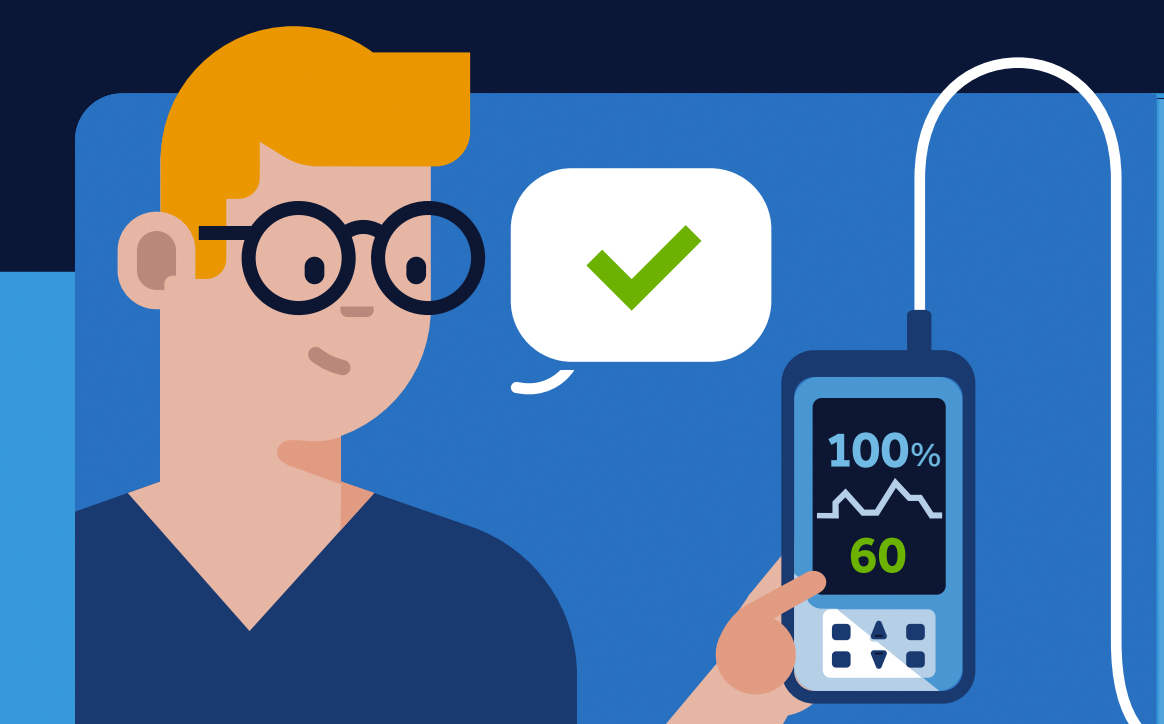

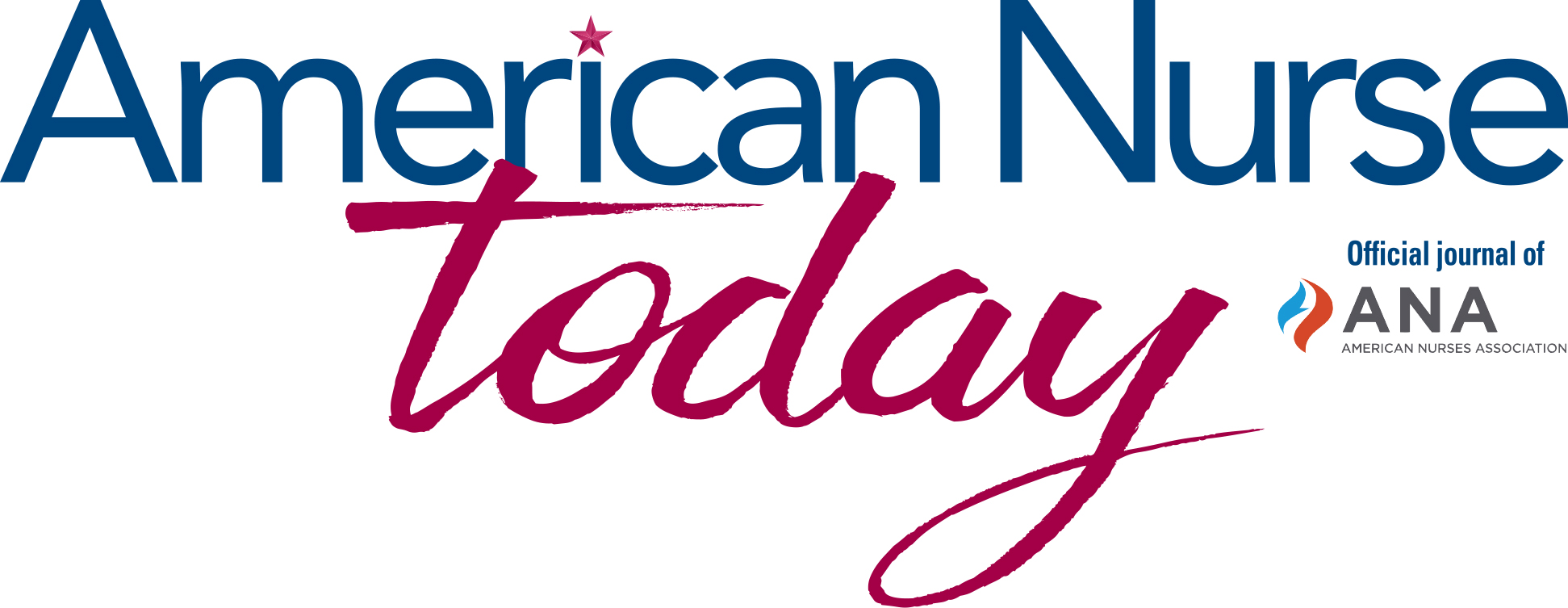
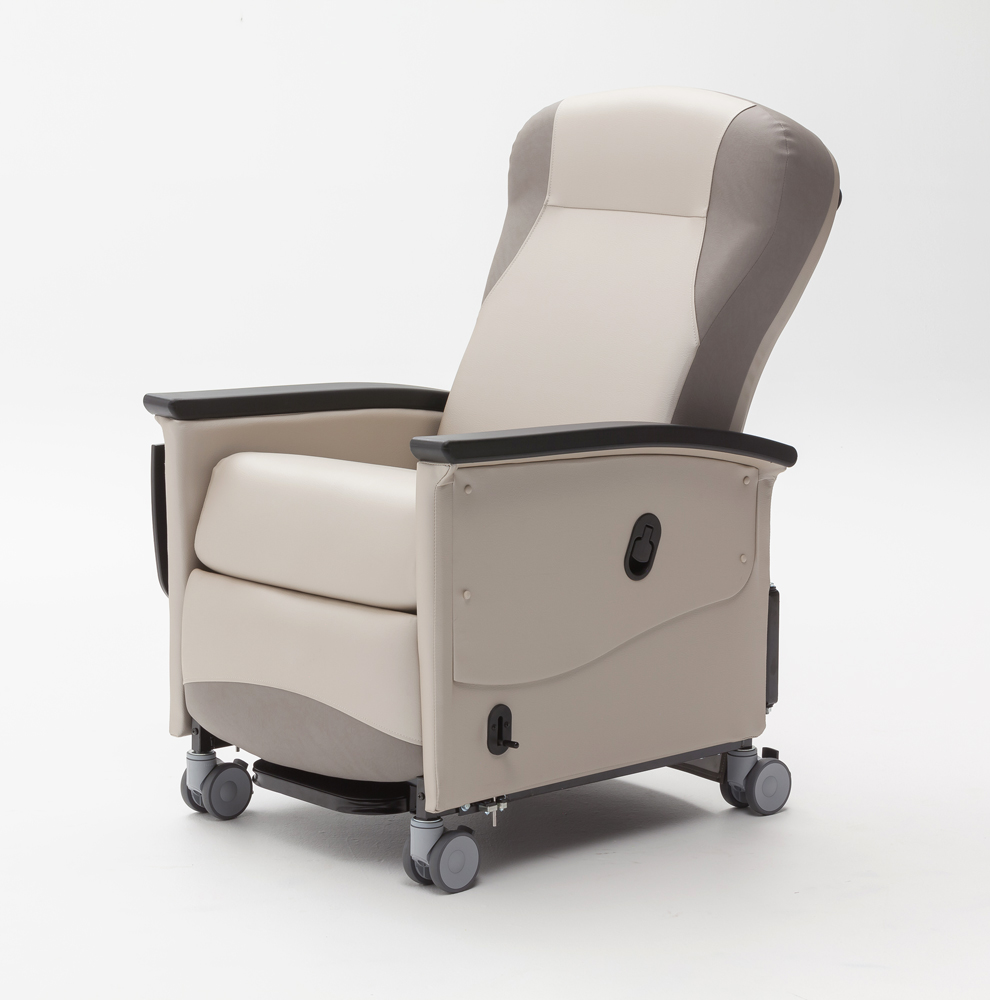
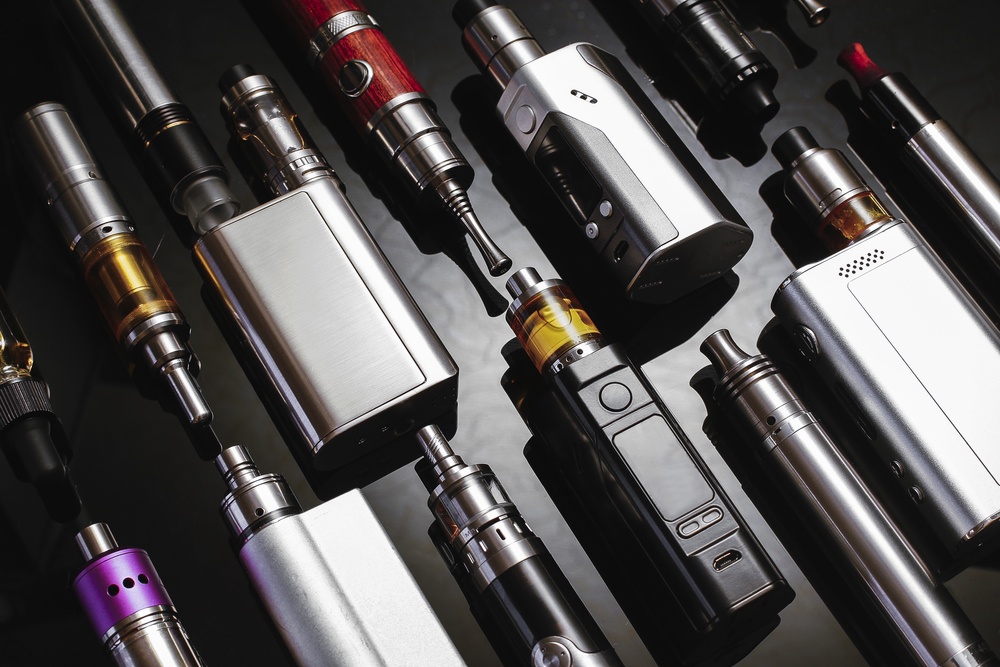
2 Comments.
Hi! This is an excellent article. Our hospital is considering implementing something similar. I would love to hear more about your experience. Specifically, what the “next steps” you used after the patient screened positive. We are looking for something for an orderset for the RN to implement to intervene. Any feedback would be greatly appreciated!!
Hi! Thanks for your question. When the patient screens positive, we have a best practice alert that displays for the RN to prompt the RN to discuss the patient’s change in status with the provider. We do also have a delirium care plan that is added to the patient’s chart when the NuDesc is 2 or greater. We also have 2 order sets (a prevention order set and a delirium management order set) available for providers. Working with our EHR functionality, if the patient has a positive nudesc, the order set is suggested in the providers workflow (some navigators). For patients over the age of 65, we do suggest the prevention orderset when the providers are utilizing the orders activity for that patient!